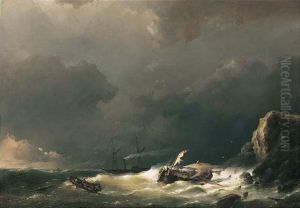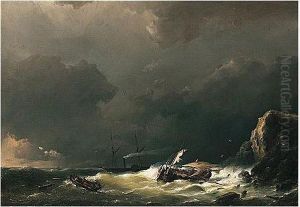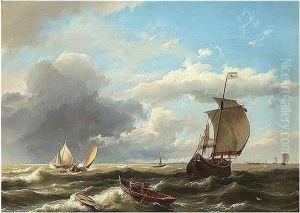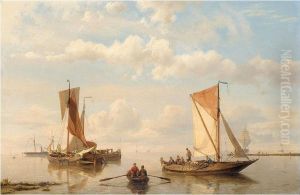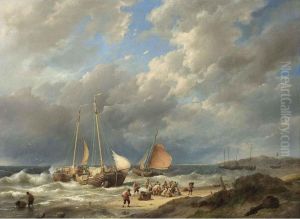Hermanus W. Koekkoek Paintings
Hermanus Willem Koekkoek was a Dutch painter, born into a prestigious family of artists in 1867 in Amsterdam, Netherlands, and passed away in 1929. The Koekkoek family had a significant impact on the Dutch art scene of the 19th and early 20th centuries, with several members, including Hermanus, making notable contributions to the genres of landscape and maritime painting. Hermanus Willem Koekkoek's lineage was rich with artistic talent; he was the son of Willem Koekkoek and part of the fourth generation of the Koekkoek dynasty of artists, which was founded by his great-grandfather Johannes Hermanus Koekkoek, a renowned maritime painter. This environment steeped in art and creativity was pivotal in shaping Hermanus's career and artistic direction.
Hermanus W. Koekkoek specialized in painting military scenes and landscapes, exhibiting a particular fascination with the depiction of soldiers and battles, a theme that resonated throughout his work. His paintings are characterized by their intricate detail, vibrant color palette, and dynamic compositions, capturing the drama and intensity of military engagements as well as the serene beauty of the Dutch countryside. Koekkoek's work reflects a blend of romanticism and realism, a hallmark of his family's artistic legacy, yet he managed to infuse his paintings with a distinctive style that set his work apart from that of his ancestors and contemporaries.
Throughout his career, Koekkoek enjoyed considerable success and recognition. He lived and worked in various locations in the Netherlands and England, where he was exposed to different influences and audiences. His works were widely exhibited and collected across Europe, appealing to a broad spectrum of art lovers and collectors who were captivated by his skillful renderings of historical and bucolic scenes. Despite the passage of time, Hermanus W. Koekkoek's paintings continue to be admired for their historical value, technical proficiency, and aesthetic appeal, ensuring his place in the annals of Dutch art history.
